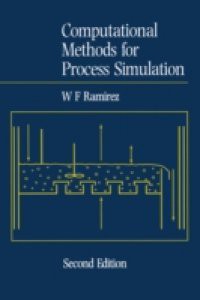Process Modelling and simulation have proved to be extremely successful engineering tools for the design and optimisation of physical, chemical and biochemical processes. The use of simulation has expanded rapidly over the last two decades because of the availability of large high-speed computers and indeed has become even more widespread with the rise of the desk-top PC resources now available to nearly every engineer and student.In the chemical industry large, realistic non-linear problems are routinely solved with the aid of computer simulation. This has a number of benefits, including easy assessment of the economic desirability of a project, convenient investigation of the effects of changes to system variables, and finally the introduction of mathematical rigour into the design process and inherent assumptions that may not have been there before.'Computational Methods for Process Simulation' develops the methods needed for the simulation of real processes to be found in the process industries. It also stresses the engineering fundamentals used in developing process models. Steady state and dynamic systems are considered, for both spatially lumped and spatially distributed problems. It develops analytical and numerical computational techniques for algebraic, ordinary and partial differential equations, and makes use of computer software routines that are widely available. Dedicated software examples are available via the internet.Written for a compulsory course element in the USIncludes examples using software used in academia and industrySoftware available via the Internet

